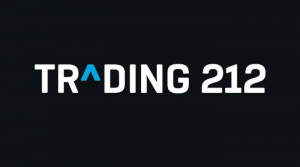From Crypto FOMO to framework: The CFTC’s strategy in the face of MiCA’s rise
The CFTC’s Advisory Committee has proposed a digital asset taxonomy to promote U.S. regulatory clarity. The guidelines were extensively vetted by regulatory authorities, financial institutions, asset managers, market infrastructures, and service providers.

The Commodity Futures Trading Commission’s (CFTC) Global Markets Advisory Committee (GMAC), under Commissioner Caroline D. Pham, advanced a significant recommendation focusing on the digital asset market.
GMAC has proposed a digital asset taxonomy to enhance regulatory clarity in the United States and align with international standards.
CFTC proposes digital asset taxonomy
CFTC Commissioner Pham highlighted the importance of this initiative, noting the comprehensive effort to establish pragmatic solutions for critical market issues.
“In a major step forward, the digital asset taxonomy framework provides valuable foundational guidelines to further advance the discussion and promote U.S. regulatory clarity, and was extensively vetted by stakeholders such as regulatory authorities, financial institutions, asset managers, market infrastructures, and service providers. I’m grateful to all of the GMAC and Subcommittee members, especially the workstream leads, and the GMAC leadership team for their substantial work.”
The recommendation was approved without objection during the GMAC meeting on March 6. It marks a major step forward in classifying and understanding digital assets, setting the stage for enhanced innovation, risk management, and regulatory comprehension within the digital asset ecosystem.
The approach builds on existing classification efforts by global and regional authorities, aiming for a consensus-driven, functional taxonomy. This initiative underscores the GMAC’s commitment to supporting effective regulations for digital assets and fostering collaboration between the industry, standard-setting bodies, and regulatory communities.
This development is particularly significant as the digital asset market continues to evolve, highlighting the need for clear regulatory frameworks and international cooperation. The adoption of a common approach for classifying digital assets is expected to contribute to the integrity and competitiveness of U.S. markets, as well as facilitate the engagement of U.S. firms in global business activities.
Is CFTC going FOMO on Crypto ahead of EU’s MiCA?
The Commodity Futures Trading Commission (CFTC) is seemingly embracing a proactive stance on cryptocurrency regulation, possibly driven by a sense of urgency or “FOMO” (fear of missing out) as Europe’s Markets in Crypto-Assets (MiCA) regulation is poised to take effect.
This emerging scenario underscores the growing recognition of digital assets’ importance in global financial markets and the need for regulatory frameworks that support innovation while ensuring market integrity and investor protection.
MiCA represents the European Union’s ambitious effort to create a comprehensive regulatory framework for digital assets, excluding those considered securities. It aims to establish clear rules for crypto asset service providers and issuers, ensuring consumer protection, market integrity, and financial stability.
Key features of MiCA include:
- Licensing Requirements: MiCA mandates that all crypto asset service providers (CASPs) operating within the EU must obtain a license, ensuring a standardized level of operation across the continent.
- Consumer Protection: The regulation introduces strict requirements for transparency and disclosure by issuers of crypto assets, aimed at providing consumers with clear, comprehensible information to make informed decisions.
- Operational Standards: MiCA sets high standards for the operation of CASPs, including requirements for the custody of assets, conflict of interest policies, and complaint handling procedures.
- Stablecoins Regulation: Given the potential systemic risks posed by stablecoins, MiCA provides specific provisions for their regulation, focusing on governance, operation, and oversight.
The introduction of MiCA is expected to have significant implications for the digital asset industry in Europe and globally. By providing a clear, harmonized regulatory environment, MiCA is poised to attract both established players and startups in the crypto space to the EU. The regulatory clarity and consumer protections offered by MiCA can make Europe a highly attractive destination for capital and innovation in the digital asset sector.
In contrast, the United States risks lagging behind in the rapidly evolving digital asset space if it does not enhance its regulatory framework. The absence of comprehensive and clear regulations at a federal level may deter investment and innovation in the U.S. crypto industry.
Companies might choose to relocate or prioritize operations in regions with more favorable regulatory climates, like the EU under MiCA. This shift could impact the U.S.’s ability to remain competitive in the digital asset arena, potentially leading to a loss of market share, reduced influence in setting global standards for the industry, and missed opportunities in economic growth and technological advancement.
The CFTC’s increased attention to digital asset regulation may reflect an acknowledgment of these risks and an attempt to ensure the U.S. remains an attractive and secure destination for the digital asset industry. However, achieving regulatory clarity that balances innovation with consumer protection and market integrity will be crucial for maintaining the competitiveness of the U.S. in the global digital asset landscape.









